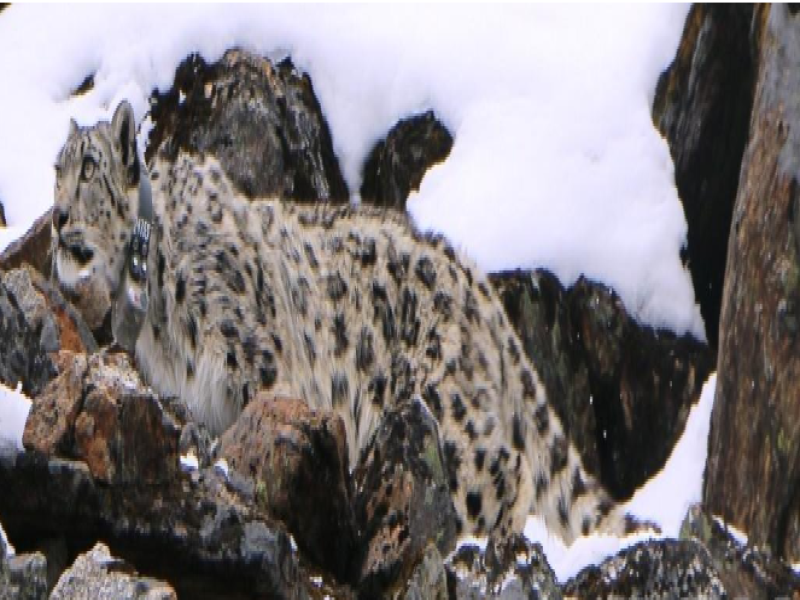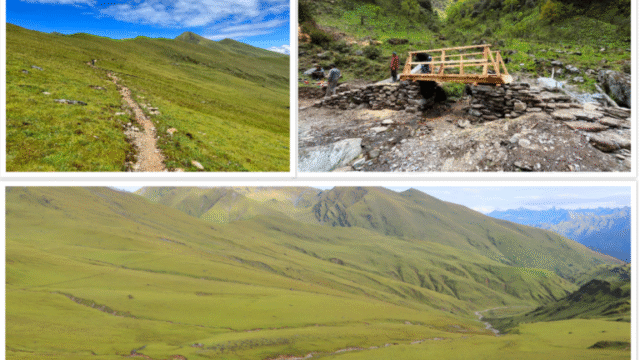Today marks the celebration of the 11th International Snow Leopard Day, aimed at raising awareness about snow leopard conservation. These elusive big cats are found only in 12 countries worldwide and are considered key indicators of a healthy Himalayan ecosystem.
This year’s theme, “Preserving Snow Leopard Habitats for Future Generations,” underscores the importance of protecting the snow leopard’s natural habitat and maintaining the health of mountain ecosystems. Nepal’s Ministry of Forests and Environment is observing the day with various events, including the release of a snow leopard survey from the Kanchenjunga Conservation Area. The event, attended by Forest Minister Ain Bahadur Shahi Thakuri, will also unveil reports on snow leopard studies in Dolpa National Park’s eastern region and a photograph of a wild yak captured inside the park.
Snow Leopard Habitat Under Threat
The snow leopard is native to Nepal and 11 other countries: Afghanistan, Bhutan, China, Kazakhstan, Kyrgyzstan, India, Mongolia, Russia, Pakistan, Tajikistan, and Uzbekistan. However, climate change and habitat degradation have led to a decline in snow leopard habitats, according to Dr. Ram Chandra Kandel, Director General of the Department of National Parks and Wildlife Conservation. The fragmentation of their habitats and the reduction of prey species are significant concerns.
“About 60% of snow leopard habitats in Nepal are outside protected areas, and these regions are increasingly fragmented,” Dr. Kandel said, highlighting the challenges posed by human-wildlife conflict, illegal trapping, and limited resources for effective monitoring. He emphasized the need for cooperation among all levels of government to address these challenges.
Conservation Initiatives and Challenges
The Ministry has launched the “Snow Leopard Conservation and Action Plan (2024-2030),” which sets strategic goals to enhance conservation efforts. The plan focuses on habitat protection, reducing human-leopard conflict, and cracking down on poaching through better law enforcement. It also seeks to strengthen regional and international cooperation.
The plan includes a budget of NPR 1.77 billion over six years, with 35% allocated to mitigating human-snow leopard conflict and 26% to wildlife crime management. The program also highlights community involvement as a vital aspect of snow leopard conservation.
Snow Leopard Numbers and Significance
Snow leopards are a critical part of the high-altitude ecosystem and are often called the “Queen of the Himalayas.” Nepal is estimated to have between 300 and 500 snow leopards, while the global population is around 4,000 to 6,500. Their long tails help them maintain balance on rugged terrain, making them well-adapted to their mountainous habitats.
Due to their elusive nature, counting snow leopards across the entire country is challenging. Therefore, surveys are conducted in different regions, including Kanchenjunga, Manaslu, and Dhaulagiri, among others. The Ministry’s previous data indicated that Dolpa alone is home to approximately 90 snow leopards, tracked using camera traps.
Global Efforts and Future Plans
The International Union for Conservation of Nature (IUCN) Red List lists snow leopards as vulnerable. Dr. Kandel stressed the need for all stakeholders to work together to curb illegal poaching and trafficking of this endangered species. He also noted that community awareness and engagement have played a role in reducing poaching in recent years.
By improving habitats and creating secure corridors for the snow leopard, the government aims to ensure the long-term survival of this majestic species, while minimizing human-leopard conflicts. The action plan also seeks to enhance research and monitoring efforts to better understand the species’ behavior, threats, and habitat requirements.
As we celebrate International Snow Leopard Day, it is crucial to recognize the importance of collective efforts in conserving one of the world’s most elusive and majestic creatures, ensuring that future generations can witness the beauty of the snow leopard in its natural habitat.
Source: RSS






